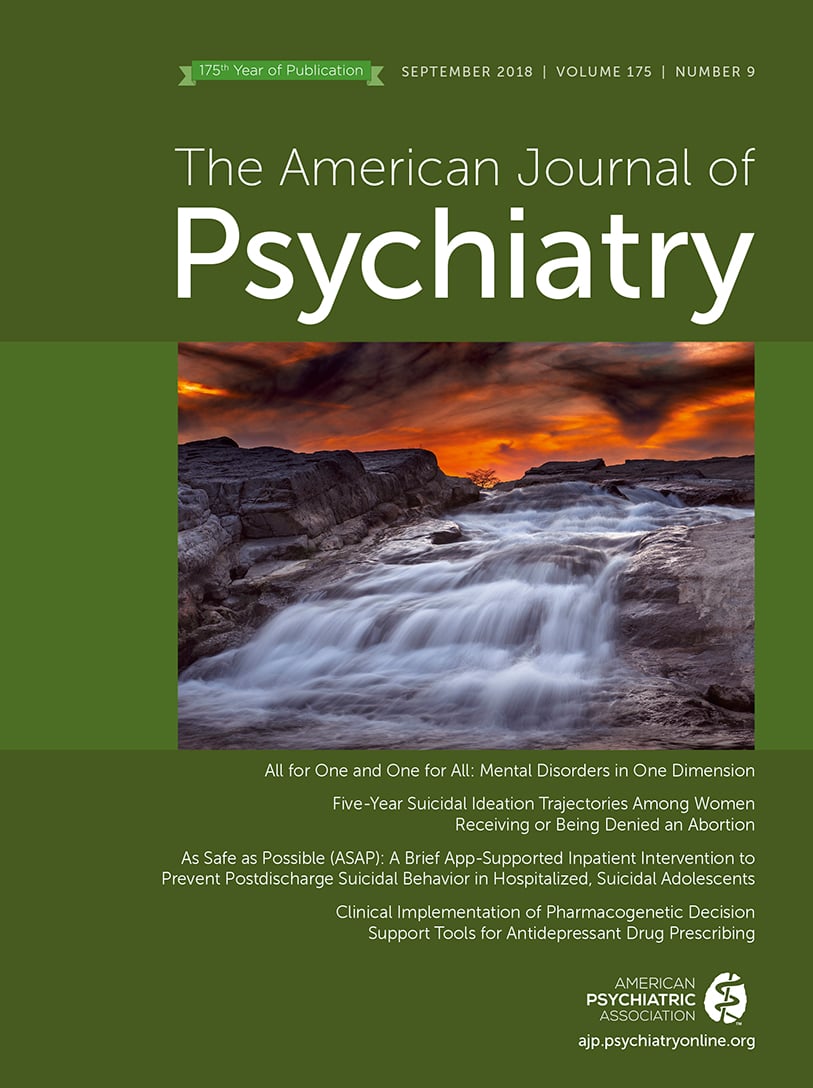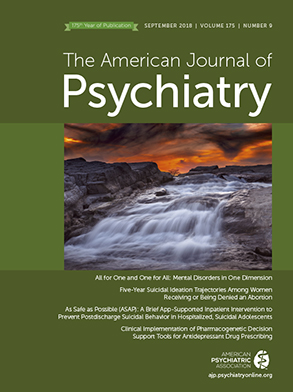Seven countries and states have legalized or permitted euthanasia and physician-assisted death under existing law (
1). The Dutch Termination of Life on Request and Assisted Suicide Act came into force in 2002. Goals of the law include providing legal security for all involved, assuring prudent practice with regard to euthanasia and physician-assisted death by physicians, and providing an adequate framework for physicians to be accountable and for increased transparency and societal control. Criteria for granting euthanasia in the Netherlands include a voluntary and well-considered request, the presence of unbearable and prospectless suffering as assessed by a physician, and the absence of reasonable treatment options after consultation with an independent physician (
2).
Euthanasia has been found legitimate by the Dutch society on the grounds of two fundamental principles: the principle of compassion (counteracting unbearable suffering) and the principle of autonomy (the right of self-determination). Four to five in 10 people in the Netherlands are in favor of allowing people with a psychiatric illness to end their life on request; six to eight in 10 people favor it being allowed for people with dementia; four to six in 10 favor it being allowed for healthy older people who consider their life completed; and four in 10 favor it being allowed for children younger than age 12 (
3).
The Netherlands has a population of nearly 17 million and has 147,000 annual deaths. The total number of explicit requests for euthanasia in 2016 was 17,900, of which 34% were granted, with 4.1% of all deaths being the result of euthanasia (N=6,091). One percent of reported euthanasia cases in 2016 were patients with psychiatric disorders. In 2016, Dutch psychiatrists received an estimated 1,100 euthanasia requests, of which 60 were granted. An estimated 3.4% (N=128) of psychiatrists (N=3,700) have ever granted a request. A survey among psychiatrists showed an increase in the estimated number of requests from 320 in 1995 to 500 in 2008 and then to 1,100 in 2016 (
3).
The euthanasia act has ignited fierce debates among Dutch psychiatrists. Arguments pro euthanasia contend that it would be unfair to exclude psychiatric patients if they fulfill the due care criteria, that psychiatric suffering might be worse than somatic suffering, that euthanasia offers a dignified medical alternative to patients who otherwise might complete suicide, and that considering a request for assistance in suicide is part of the responsibility of a psychiatrist.
Arguments contra euthanasia maintain that the criteria for psychiatric suffering are less objective than somatic suffering, that psychiatric disorders per se are not life threatening, that the distinction between disorder-related and suffering-related desire to die is hard to establish, that there is a serious risk that the psychiatrist’s granting of a request is contaminated by countertransference, that the extent to which a request from an acutely ill psychiatric patient can be voluntary and well considered is doubtful, and that there is a question of whether one should consider granting a request for assisted death when the quality of mental health care is not sufficient.
Apart from controversy about the primary question, whether euthanasia is an option for psychiatric patients, there are medical and ethical dilemmas related to the practical process of decision making and execution. How can we reconcile the daily practice of reducing suicidal ideas and behaviors in patients with respecting a death wish in single cases? How can we distinguish between symptoms and existential needs? How can we decide whether a psychiatrist is sufficiently autonomous to judge euthanasia? Does the fragile therapeutic relationship between psychiatrist and patient not bias judgment? How are differences in opinion between psychiatrist and patient resolved? Although psychiatrists are not legally obliged to approve or execute euthanasia, neither can they interfere once a request is granted by a third party, as illustrated in the aforementioned case.
Psychiatrists in the Netherlands as well as in Belgium increasingly experience these practical dilemmas as professional problems. The possibility of a physician-assisted death adds a problematic new aspect to psychiatric treatment. For patients, it can become a seemingly perfect solution that precludes difficult therapeutic work to resolve problems in their lives and in themselves. For psychiatrists, it can be seen as the ultimate patient demand that carries the weight of transference and countertransference with an unprecedented seriousness. The possibility that the patient at any time is free to seek assistance with death from another physician may induce a frustrating therapeutic atmosphere.
The powerlessness psychiatrists may feel when facing a euthanasia request may be comprehended as moral distress. Moral distress is the state experienced when moral choices and actions “of doing the right thing” are constrained by conflicts of interests or public expectations. It arises for psychiatrists in their efforts to fulfill two conflicting roles; they are held accountable simultaneously for the healing of mental suffering and the preservation of life. Paradoxically, although the number of requests has increased in the Netherlands, psychiatrists have become more reluctant toward euthanasia. In 1995, 53% of psychiatrists found it inconceivable to ever consider euthanasia; in 2015, 63% of psychiatrists rejected euthanasia (
3).
Nevertheless, euthanasia is a pressing public issue in the Netherlands. There is widespread public support for the current regulation of ending life on request, and it is expected that requests by psychiatric patients in the Netherlands will increase. Three developments encourage this growing demand: societal developments, the role of psychiatry, and the euthanasia act. First, Western societies are increasingly dominated by a drive toward more autonomy for the individual and the supreme right of self-determination. Being in control has become the ultimate moral virtue of Western citizens. We desire full control not only of our life but of our death as well. People believe it is necessary to regulate birth and now death. Second, in past decades, psychiatry has gradually shifted its goals from treating symptoms of “patients” with diseases to augmenting quality of life of “clients” who are mentally stressed. With an emphasis on quality of life instead of treatment, reduction of suffering has become a priority and a responsibility of psychiatry. Psychiatry now maintains a balance between the border of treating disorders and providing patients a happy life. Finally, the possibility of euthanasia may lower many people’s threshold for ending their lives. The legalization of euthanasia not only appears to justify morally the intention to die, it also institutes suppliers of the services who encourage the demand for euthanasia.
Euthanasia motivated by psychiatric disorders has been legal in the Netherlands since 2002. To date, the number of granted requests is limited, but rising public awareness increases annually the number of requests. There still is controversy about the role of euthanasia in psychiatry and its practical implementations. The debate exceeds medical decision making and is primarily based on ethical and philosophical grounds. Eventually, the position of an individual psychiatrist toward euthanasia and caring for life depends on his or her metaphysical perspective on death. Is death solely the end of life, or is death the start of a meaningful life? Whatever stance one takes in the euthanasia debate, albeit good or bad, right or wrong, in the end, there is a terminal effect. Euthanasia for psychiatric disorders is an infinite debate with finite consequences.

